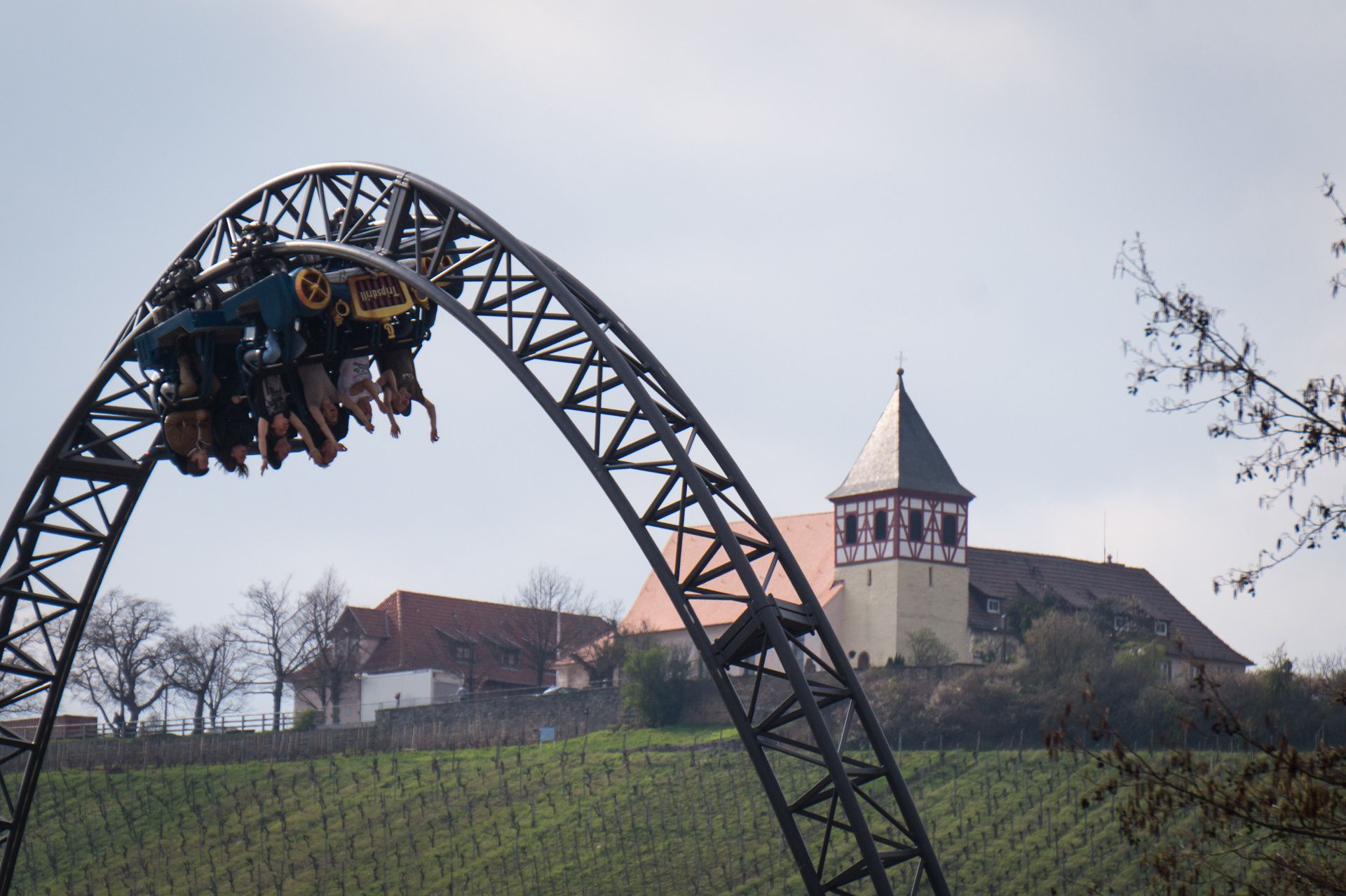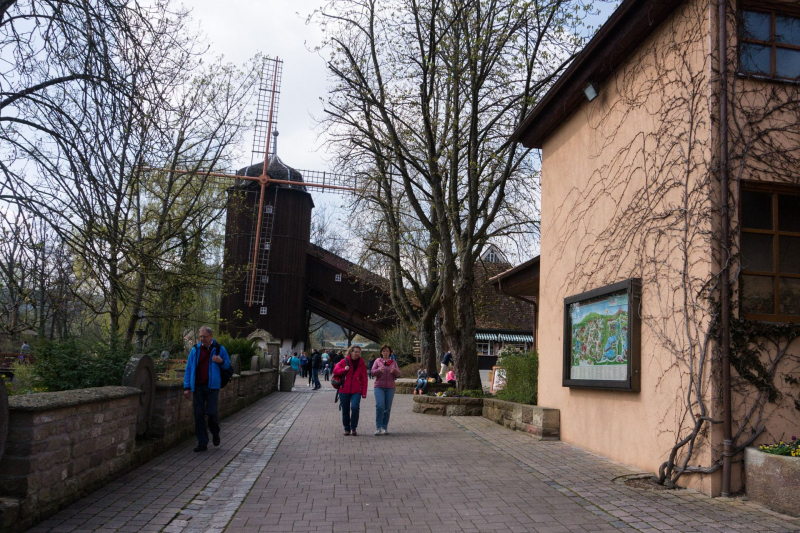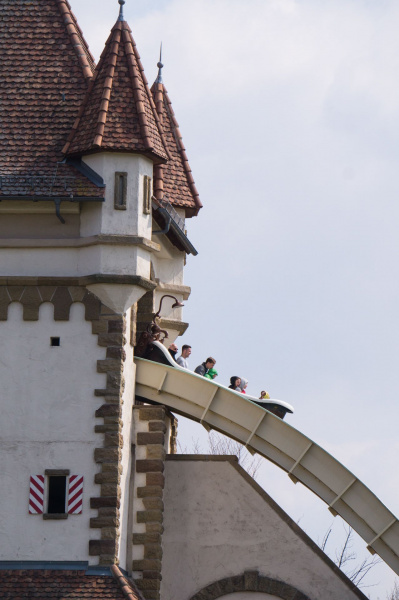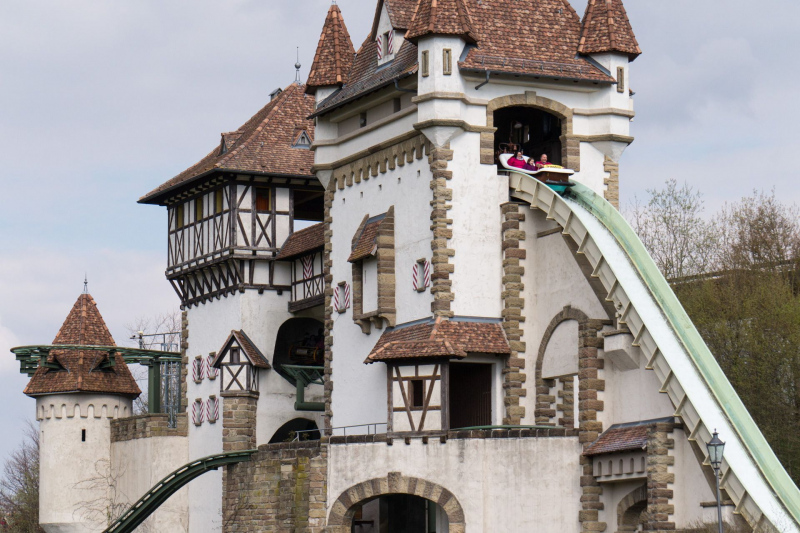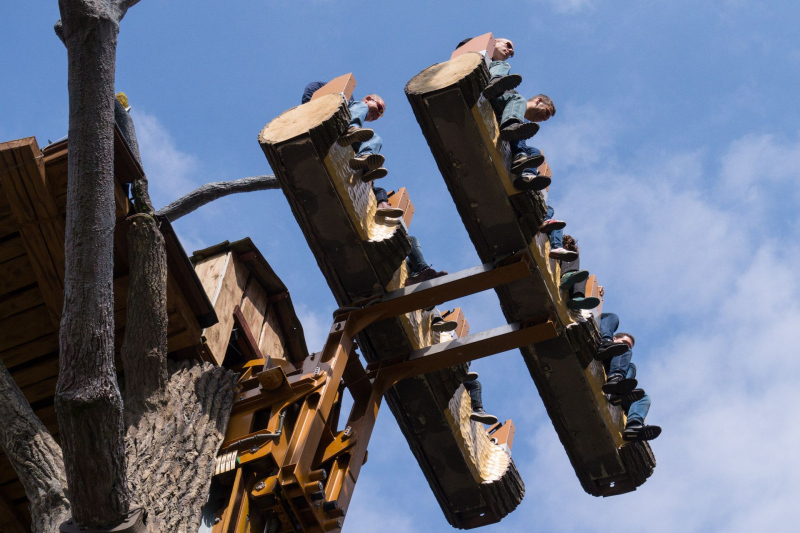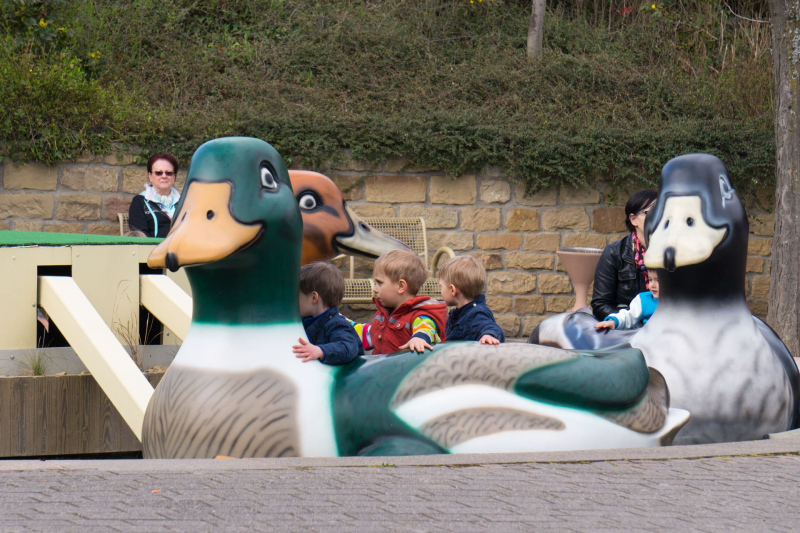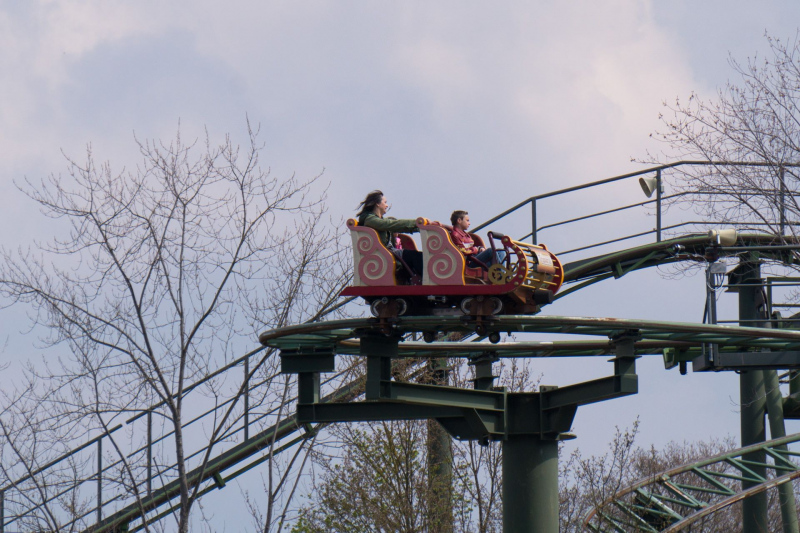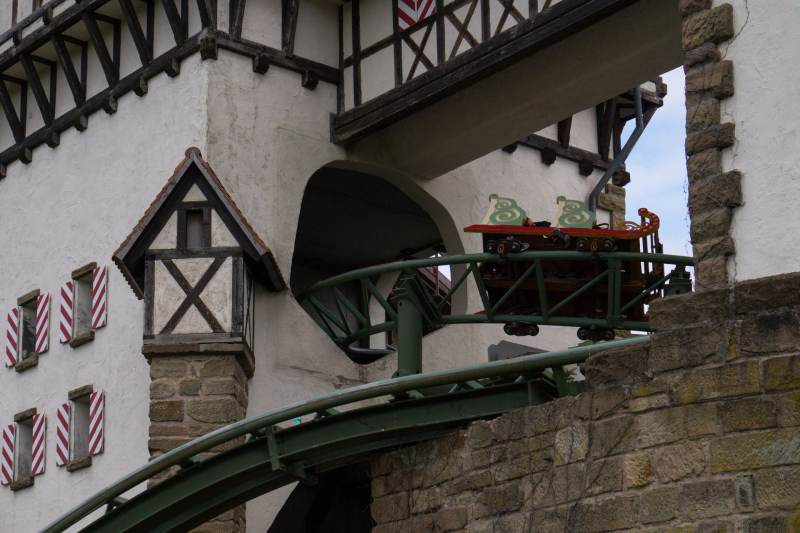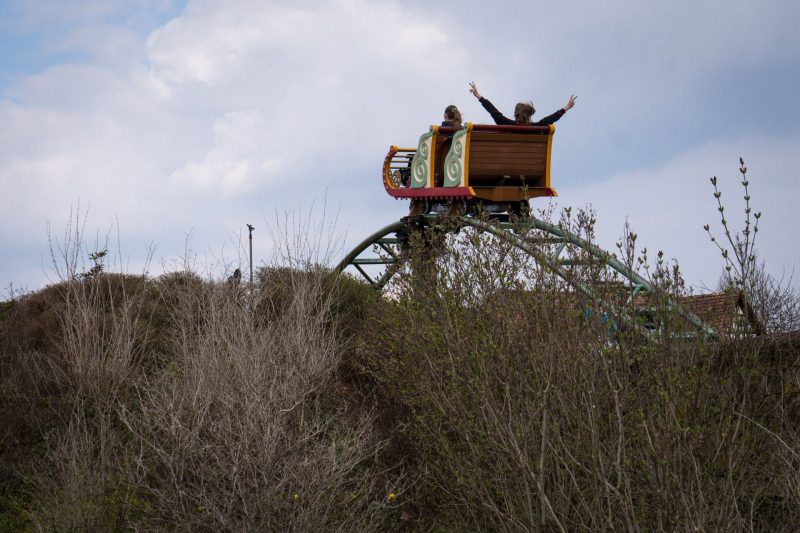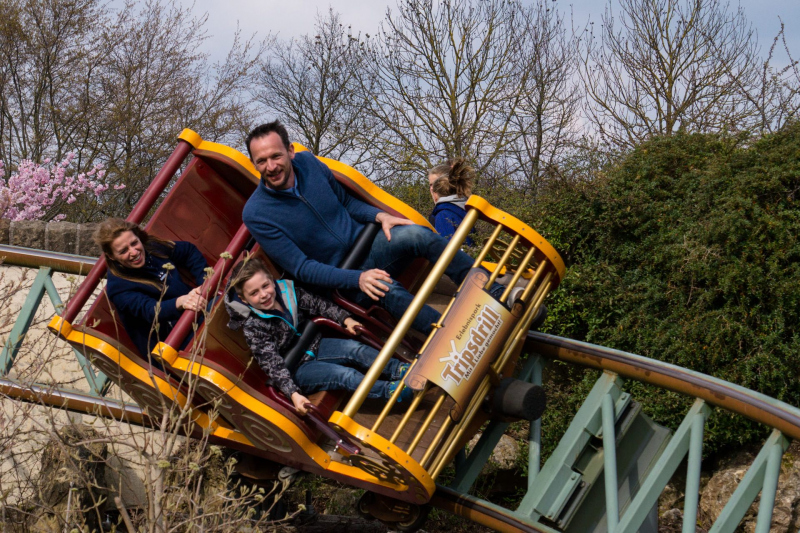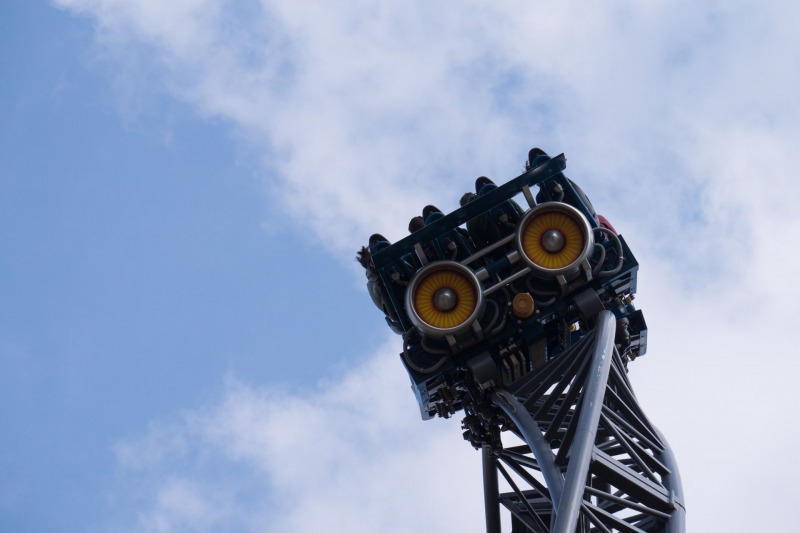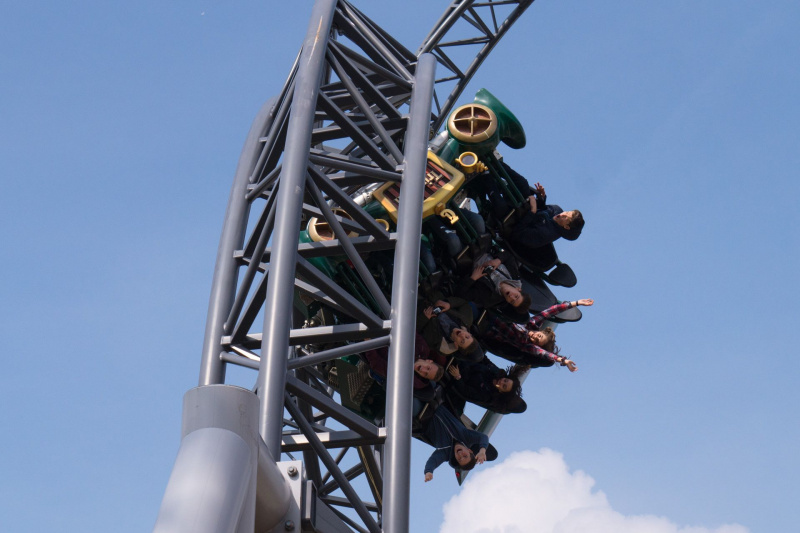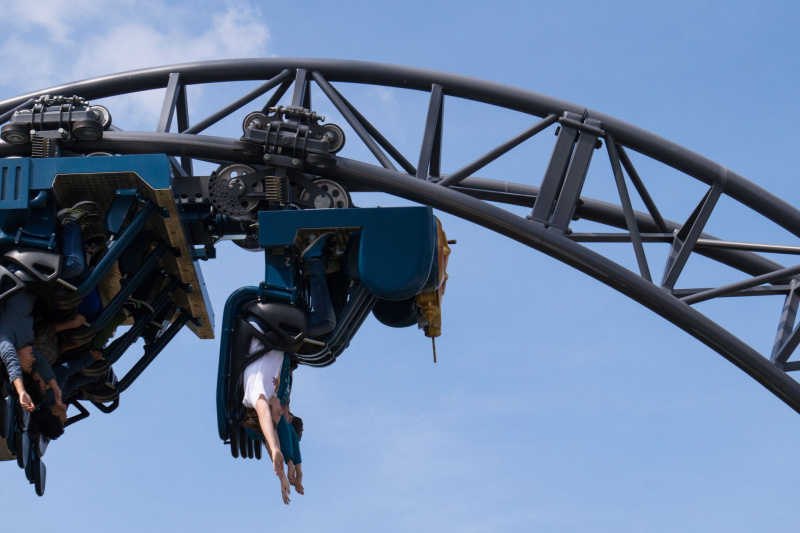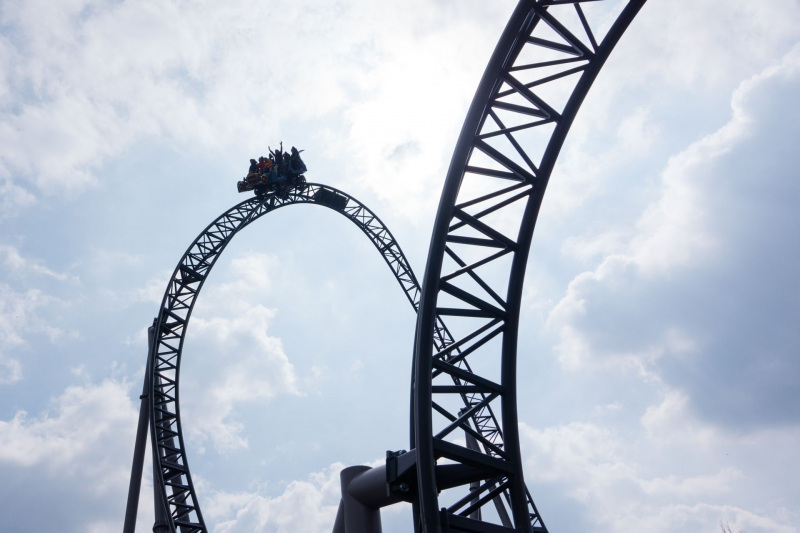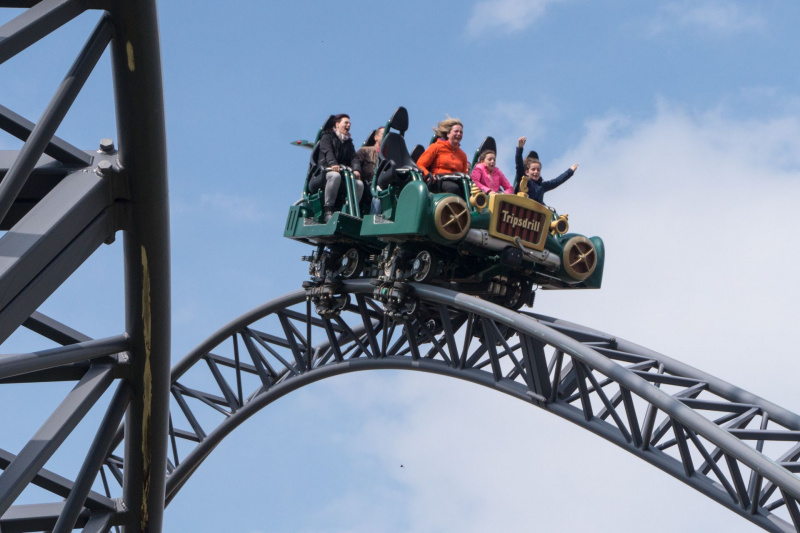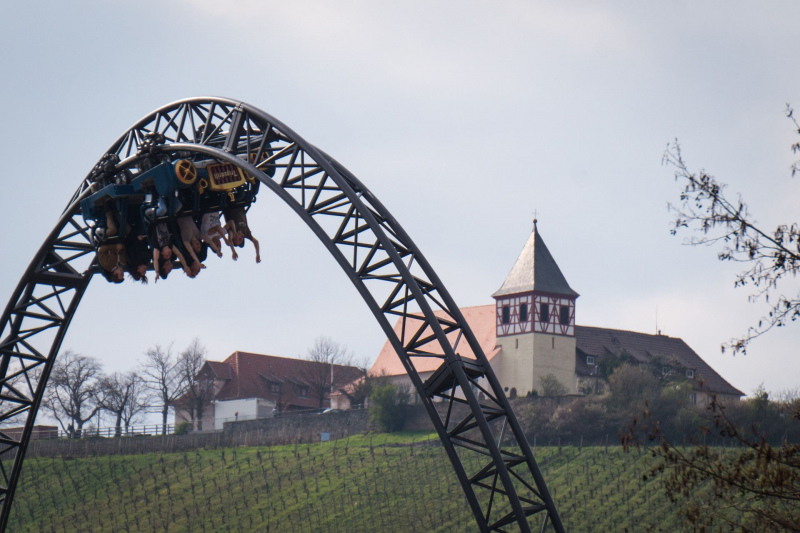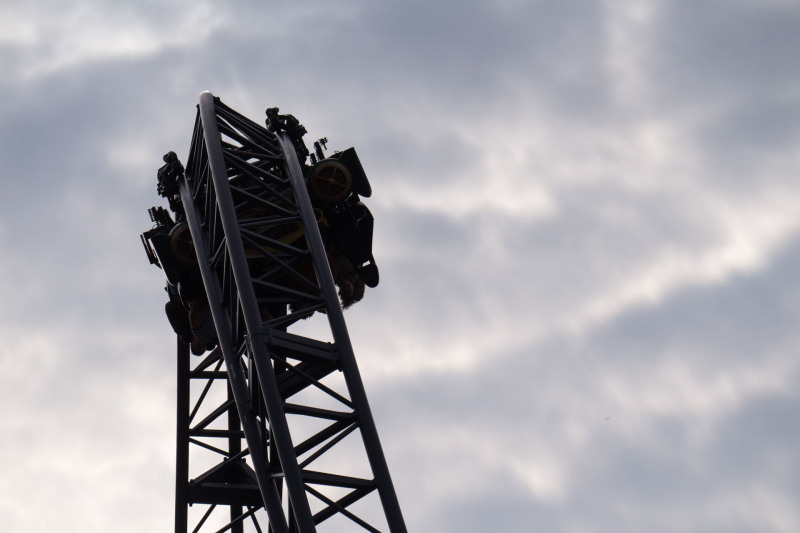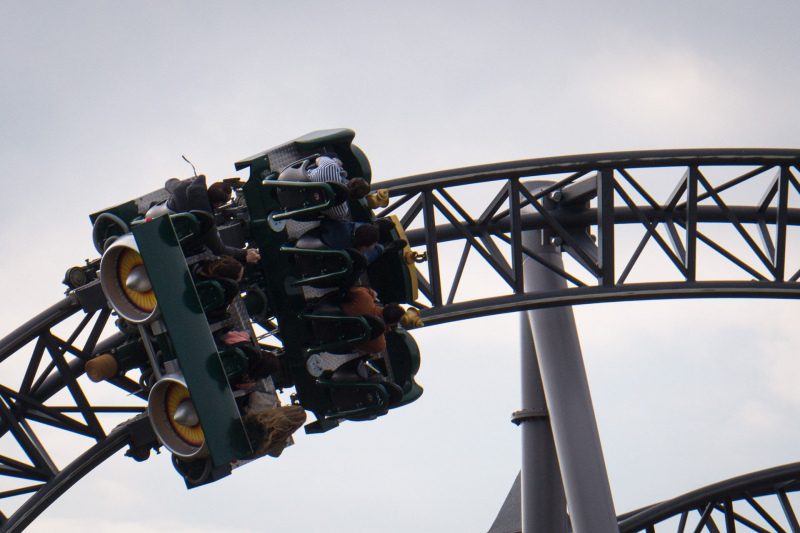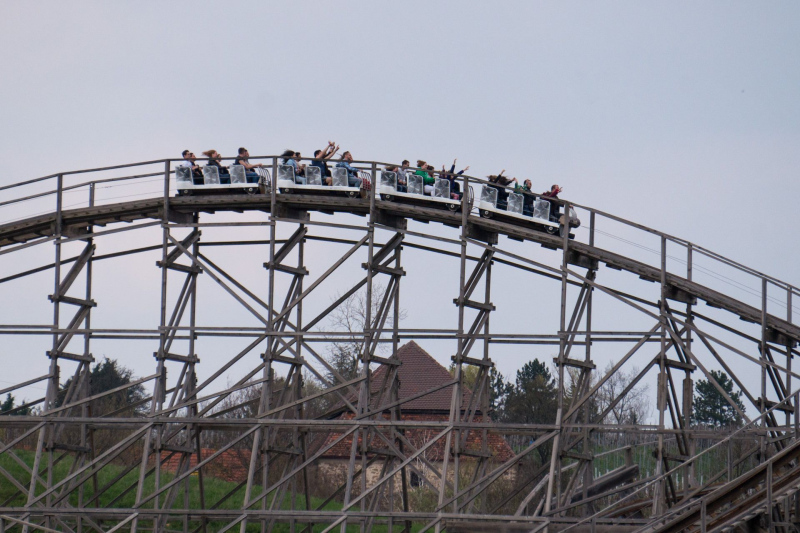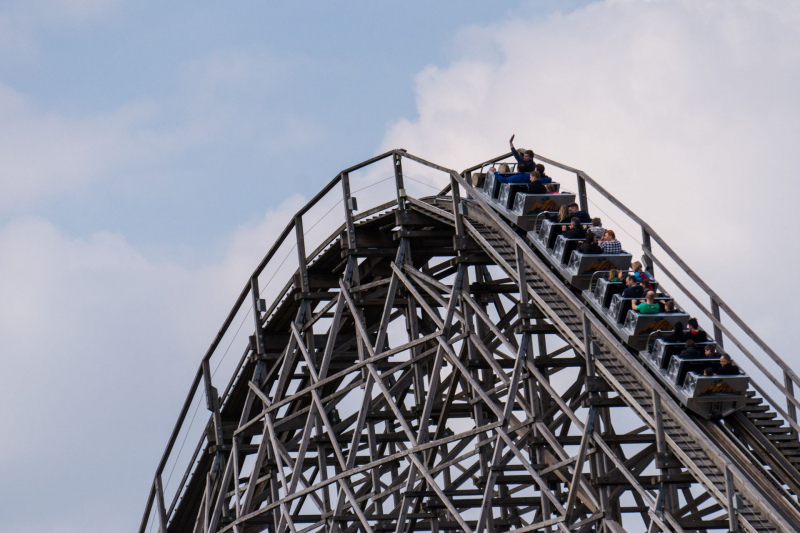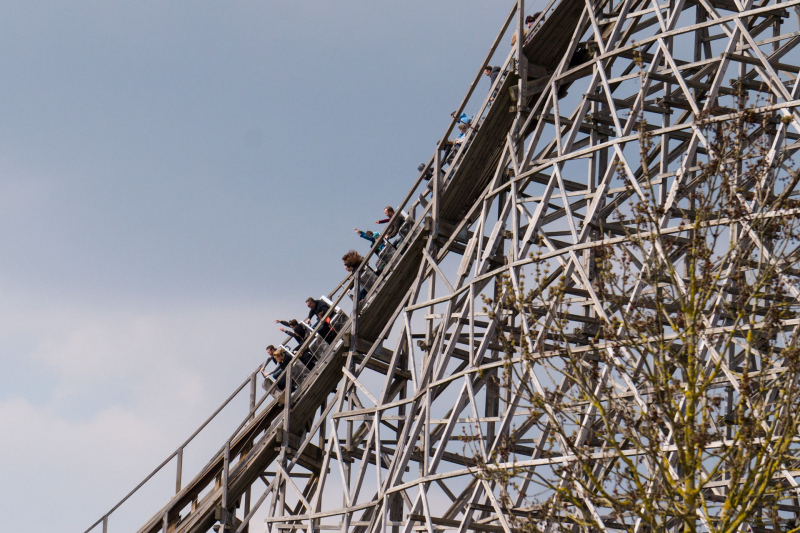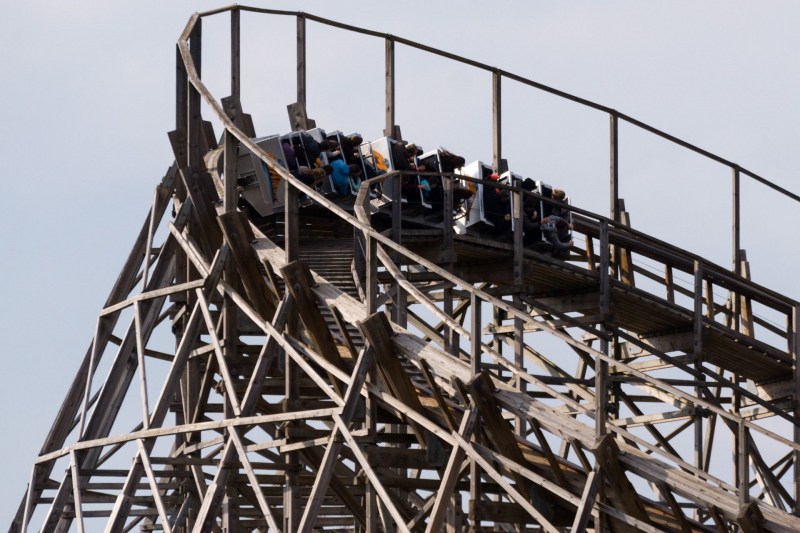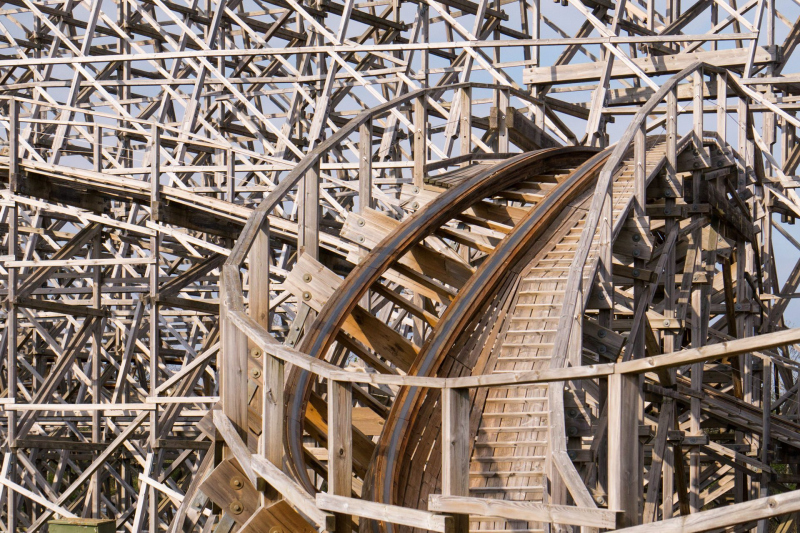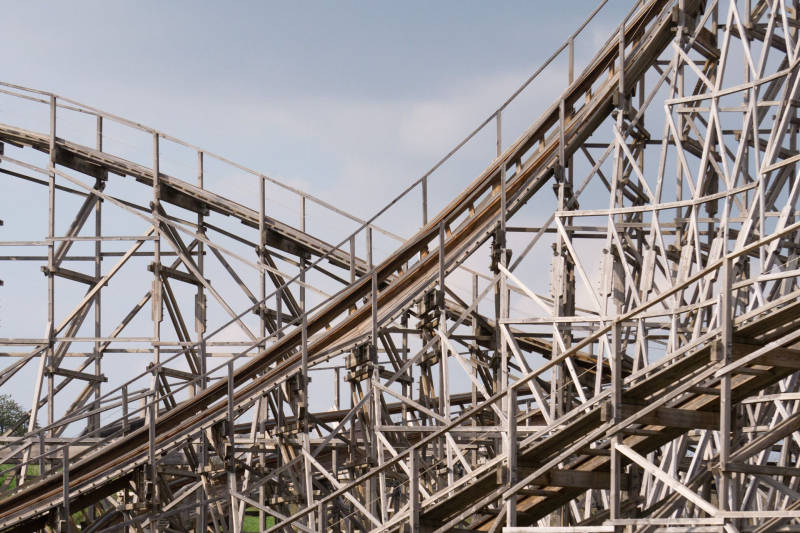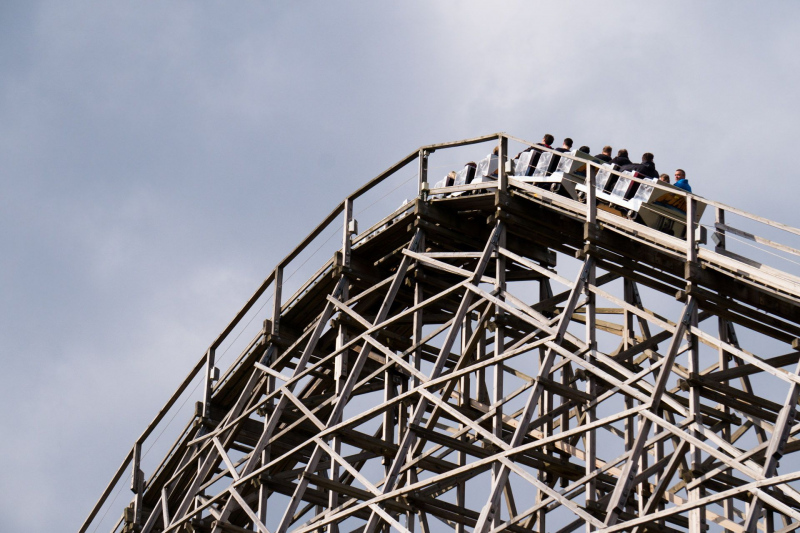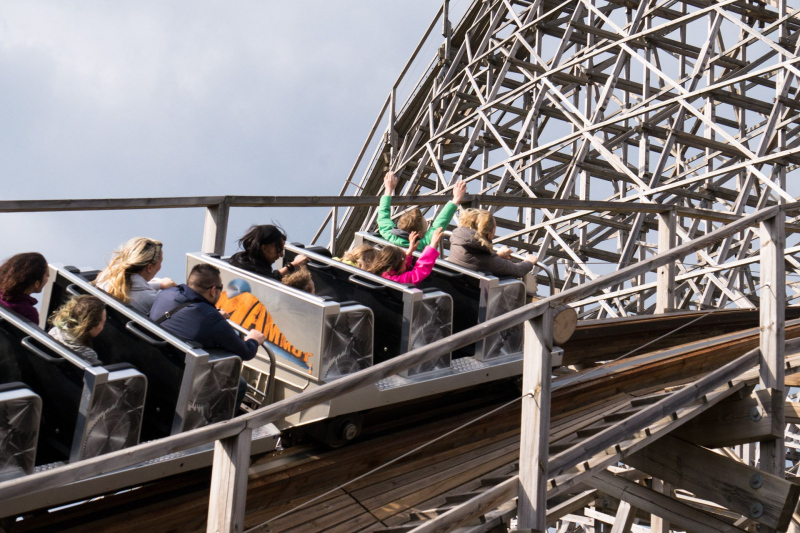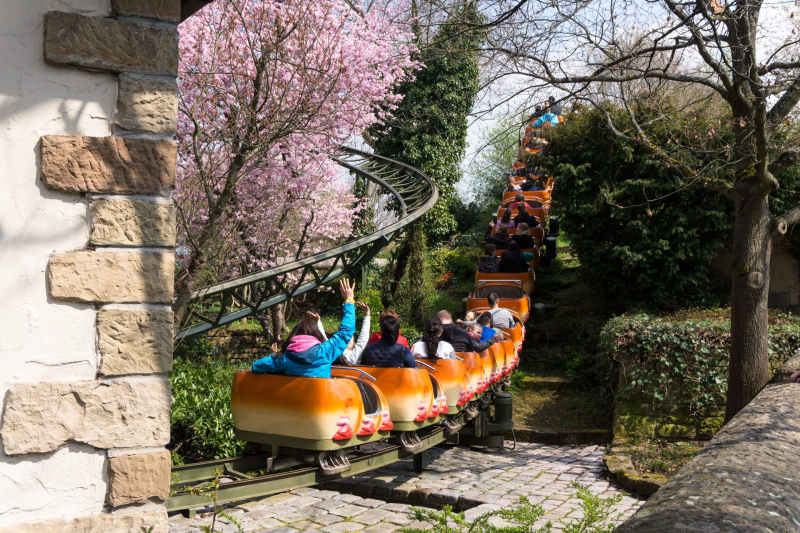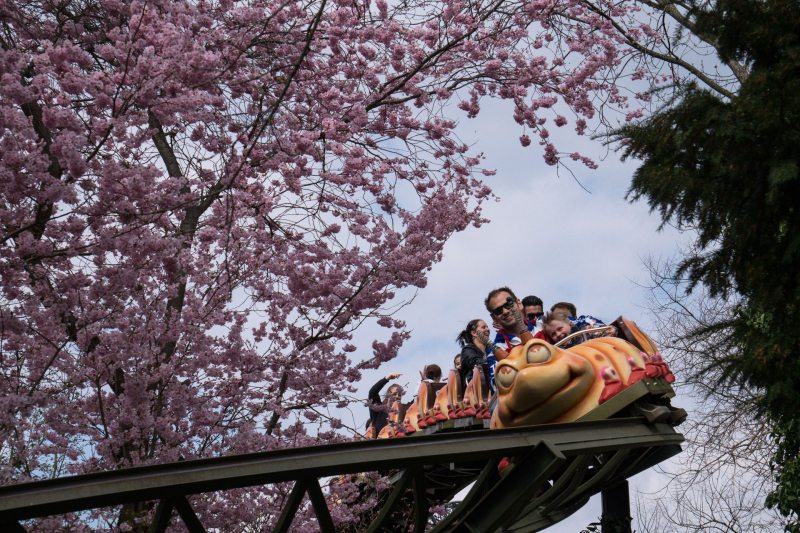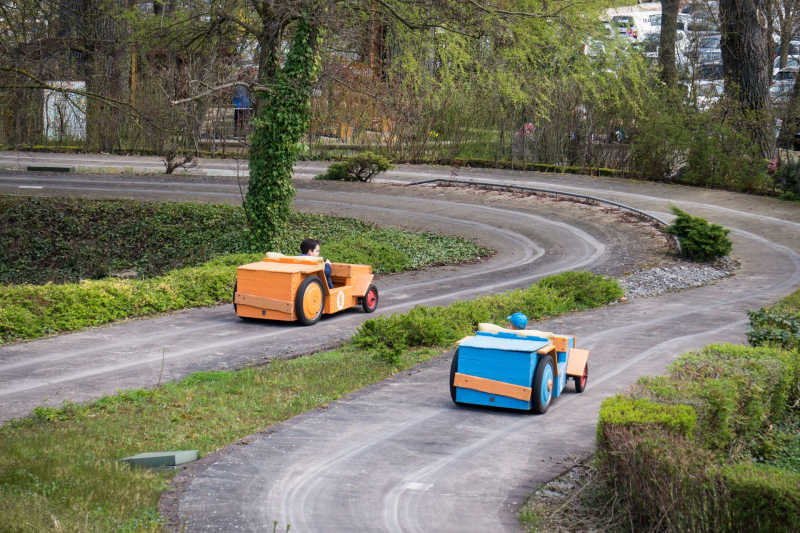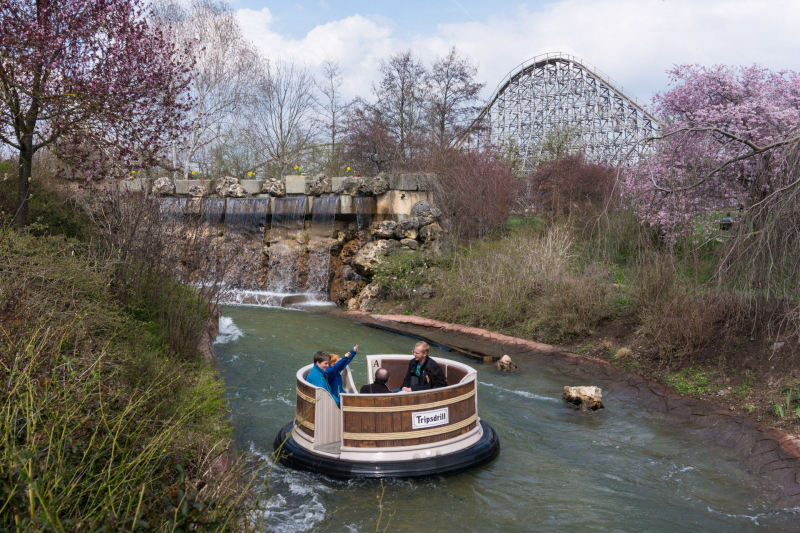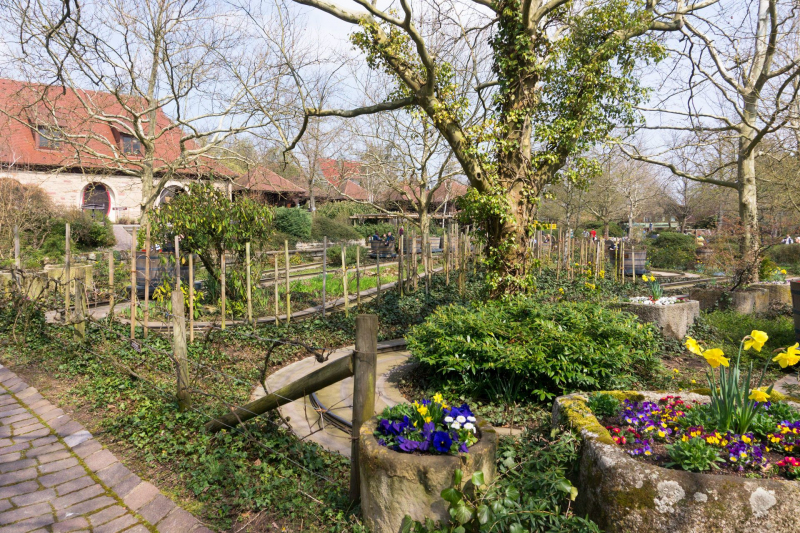Preface
Erlebnispark Tripsdrill is not a good theme park. Although my reports always reflect a very differentiated and well-considered opinion, it makes sense for once to anticipate a judgement and play with open cards. I don’t like this park and I will probably never like it. The fact that I visited the park for a second time after 2009 was only because of the rather new launch coaster Karacho and even for this one I would never want to visit the park again, but more about that later. In general, the Erlebnispark Tripsdrill is overpriced, has an inferior gastronomy and demands a small contribution at every corner to be able to use the full offer. The wildlife park that belongs to the park is, as also the parking, included in the entrance fee, but is probably not really visited by many visitors; after all, the only reasonable connection to it is your own car.
History of the Theme Park
It all began in 1929 with the construction of the Altweibermühle zu Tripsdrill. Eugen Fischer, the owner of an inn in Treffentrill, took the idea of building the Weibermühle von Tripsdrill from the singspiel by Georg Anton Bredelin after some hikers in the region had explicitly asked for the mill. The allegedly rejuvenating cure of the wild slide was soon on everyone’s lips and thus Tripsdrill steadily developed into a popular excursion destination in the region. In 1957 the first zoo in the immediate vicinity of the mill followed and from the 1960s on the first rides.
Tour of the park
The rides of the front area
When you enter the park, you will immediately find yourself on the nicely designed village street, where you will find the pleasant panoramic Maibaum ride next to the Gaudi quarter, a covered children’s playground featuring a free fall. Here you can also buy the tickets for the crossing to the Wildparadies.
The Mühlental with the famous Altweibermühle is located next to it. To prevent the men from idly assisting the women’s rejuvenation there is also the Altmännermühle, a mechanical open-air obstacle course of an older construction. The Doppelte Donnerbalken, a more than modest vertical ride with a strange inclination effect, the leisurely boat ride Spirtztour der Seefahrer, the children’s log flume Mühlbach-Fahrt, as well as the unique Seifenkistenrennen round off this area.
Friends of overlong leisurely rides will find what they are looking for at the wedding market. Here you will find three of these attractions: the vintage car and horse-drawn Hochzeitsreise, the Schmetterlingsflug and the Wiegen-Hochbahn. Since marriages nowadays tend to be of shorter duration, a trip on the wine bucket ride Weinkübelfahrt is recommendable, before you try your hand at the soup bowl ride Suppenschüsselfahrt through the individual soups in a similar way. With the coffee cup ride, the spinning game could continue, but unfortunately the park runs all flat rides on a low flame, so that even the prototype of this popular classic is not convincing. But this only really gets worse with the Gugelhupf-Gaudi-Tour, the first and only modern waltz ride from Münsterhausen, which, with the best will in the world, has nothing in common with its predecessor. The three other rides, Wäschekorb-Rundflug, Schlappen-Tour and the Wellenflieger Wirbelpilz, are, outside of their design, accordingly worth no mention. After all, the big Tivoli roller coaster Rasender Tausendfüßler by the manufacturer Zierer still manages to entertain the passengers well.
Up to the present time of the report, the front theme areas of the theme park have been covered because they more or less form a unit and are connected to the rear area only by a rather narrow path along the outer park boundary. So there is no direct connection to the quite dominant roller coaster Karacho, which means that you can get lost mercilessly if you don’t know the place. The peeps of the notorious computer game Roller Coaster Tycoon would have complained loudly about not being able to find attraction XY, especially since the signage is not optimal. In fact, I don’t know of any other amusement park in Europe that is as badly constructed as Tripsdrill, although it can’t be that difficult to build an overpass or underpass and create a second access route, which should also benefit the general distribution of guests.
Waschzuber-Rafting
But if one should have made it to the back area, one immediately comes across to the first big attraction of the park, the Waschzuber-Rafting. This stylish Hafema ride is completely dedicated to the topic of doing the laundry and has some interesting exhibits in its queue that reminds of a museum. The ride through the winding road is not particularly wet, nor fast, but nice and really well embedded into the landscape.
Badewannen-Fahrt zum Jungbrunnen
Behind the round boat rafting, the facade of the Rauhe Klinge Castle attracts all eyes, after all, this beautifully designed concrete block on one side houses two larger rides, which complement each other extremely well. The log flume Badewannen-Fahrt zum Jungbrunnen (Bathtub Ride to the Fountain of Youth) is quite unusual, its name says it all and surprises some, let’s say rather prudish, passengers a little bit.
After one has left the, once again museum-like, queue behind him and got into his tub, the trip can start immediately. As soon as the boat swims freely in the canal, one dumbles a little towards the castle Rauhe Klinge. Parallel to the walls, the first lift takes the boat up for a short time before it goes down a short shot. In a right bend the canal leads you into the building, whereupon you have found the fountain of youth and indeed the old women seem to taper off into young, crisp and well-built women. But the view is only short and so the second lift leads up quickly. This is also where the first turntable is waiting for you, whereupon you take the second, medium sized downhill run backwards. At the back of the castle you now make a turn including the second turntable. Thereupon another lift hill leads you up one last time. At the top you can have a last look at the surrounding landscape before you turn left and enter the upper floor of the castle. After a shorter straight section the big and final shot of the lift takes place, whereupon contact with the wet element is inevitable. The spray is refreshing, so after returning to the station you will be very happy to get out of the tub.
G’sengte Sau
The second ride of the Rauhe Klinge Castle is the 1998 built bobsled coaster G’sengte Sau by the Münsterhausen manufacturer Gerstlauer and its sign the first new roller coaster from the former factories of the legendary roller coaster smithy Schwarzkopf. After the brisk lift hill, the ride starts with a very steep right-hand downward curve, whereupon an outward helix is completed in the same direction of rotation. This is followed by four powerful, contiguous serpentines, which are perfect for exerting some pressure on the person sitting next to you, before the ride, still introduced by the “Wetten, Dass…?”-sign of the famous bet of extreme sportsman Dirk Auer in 2001, goes into a rapid helix combination. The following camelbacks are quickly driven through and can lift you a little bit out of the car before it goes into a final helix-combination. After that the final braking section is reached immediately and shortly after that the station.
The G’sengte Sau offers all kinds of riding fun on the wild ride through the naked concrete world of the Rauhe Klinge castle. Beautiful is certainly different, which is shown above all by the identical Thor’s Hammer ride from the Danish amusement park Djurs Sommerland, but the ride is also incredibly cult, especially because of the banner of the family show “Wetten, Dass…?”, which was cancelled almost two years ago.
Mammut
If you follow the circular route, the next big attraction of the park is the wooden roller coaster Mammut. The roller coaster opened in 2008 and was designed and built by the company Holzbau Cordes, but the trains used are from Gerstlauer. The perfectly joined track and the trains with their sprung axles made for a much too smooth ride, especially in the first years, so that a wooden roller coaster feeling did not exist. A circumstance that made me call Mammut a rather bad wooden roller coaster, but the ride has aged nicely!
The journey begins with a short left turn out of the station and into an unsuitably designed disco sawmill. A small dip and the train hooks into the chain, whereupon it is brought to a starting height of 30m. The first descent is a steep left turn down to ground level. Here one passes a powerful valley before it immediately goes along a high turn with a good speed. A high camelback follows, where you are lifted out of your seat. This is again followed by a turning curve, but this one leads into a steep curve to the left, whereupon the train dives into a small ditch. A clearly low camelback now repeats the game of weightlessness of the passengers, whereupon a fast Bavarian curve is made. Now the track leads through the framework of the lift hill and along the back of the layout. Over a short zigzag track some shake & roll – attributes of a really great wooden roller coaster – takes place, before the train dives into a tunnel after a left turn and a short change of direction. Here, the wonderfully dynamic zigzag course is repeated one more time, whereupon the braking section is already reached.
Mammut is fun! In fact, so much so that, with the best will in the world, you wouldn’t expect it if you’d only seen it in 2009. It’s the best roller coaster of the park, which is why it’s even more a shame that it was on n one train operation during the visit, although there was quite a rush.
Karacho
Let’s get to the last and newest roller coaster of the park, the launch roller coaster Karacho. The expectations were quite high, because if there’s one thing Gerstlauer can do, it’s to launch a roller coaster onto a ride offering a very funny track, and indeed Karacho has both. But the layout couldn’t convince after getting on the train, as these trains are really uncomfortable and the operating personnel additionally pushes the bars down so far that the legs are literally squeezed between the bars and the edge of the seat. Ouch! Kärnan from Hansa Park, a theme park in northern Germany, shows how it’s done differently, but until the trains were delivered two years later there were certainly some changes to them.
The ride on Karacho begins with a slow right turn out of the station. After a short and relatively steep dip, a heartline roll is initiated on a straight line. This happens rather clumsy in my opinion, as the dynamics seem to be missing during this roll; an example how to do it better can be found at the English amusement park Thorpe Park on Saw – The Ride, where the roll is passed after a short bend. Then you pass the first block brake and shortly after that another, in my opinion much too small, dip. With Karacho you are now accelerated to a speed of 90 km/h, whereupon you shoot up a top hat element. Without taking a breather, the car crashes towards the ground, passes the following valley with full force and daringly shoots an oversized corkscrew towards it. Here you are turned upside down for a second time before the train is longing for the ground again. Very restless and quick-witted, the car now takes you over a hill that is strongly inclined to the side, just before you screw up to the block brake in a steep curve. Here you are slowed down to walking speed, whereupon the following part of Karacho is driven through very leisurely. A short gradient changes into a short and uneventful camelback, whereupon you stay in a right turn for a very long time. But then the car takes momentum again and turns the passengers upside down once more while going down in a diveloop. Another corkscrew joins in and at the same time leads into the braking section, whereupon the station of the roller coaster Karacho is reached soon.
Karacho is not only uncomfortable, it also lacks the bite. The ride would be just ok if you could ride it without pain, i.e. with the classic roller coaster trains of the manufacturer, but it wouldn’t be anymore either. Especially the part with the dive loop is done without the insane force of earlier coasters and therefore hardly gives an impression; not to mention the absolutely nonsensical ride part before. Karacho certainly does justice to the target audience.
Pictures Erlebnispark Tripsdrill
Conclusion Erlebnispark Tripsdrill
The Hansa Park of the South is not a good park; it is a nice park, but simply not a good one. I have tried to understand and comprehend the whole adulation of various roller coaster and amusement park fans in different forums, but I just can’t. It’s a fact that even among Swabians (at least the one I met during my time in Stuttgart) it’s more of a toddler park. There’s simply nothing here that justifies the high entrance fee. Let’s see if the novelties after Karacho can change my opinion…
What is your opinion about the roller coaster Karacho? Just write it in the comment field below the report or on our social media channels:
